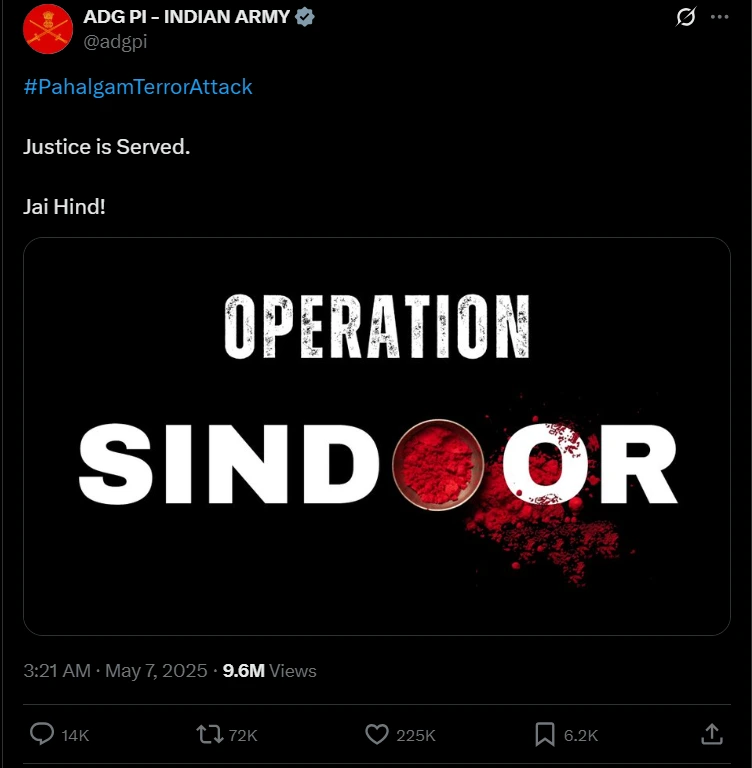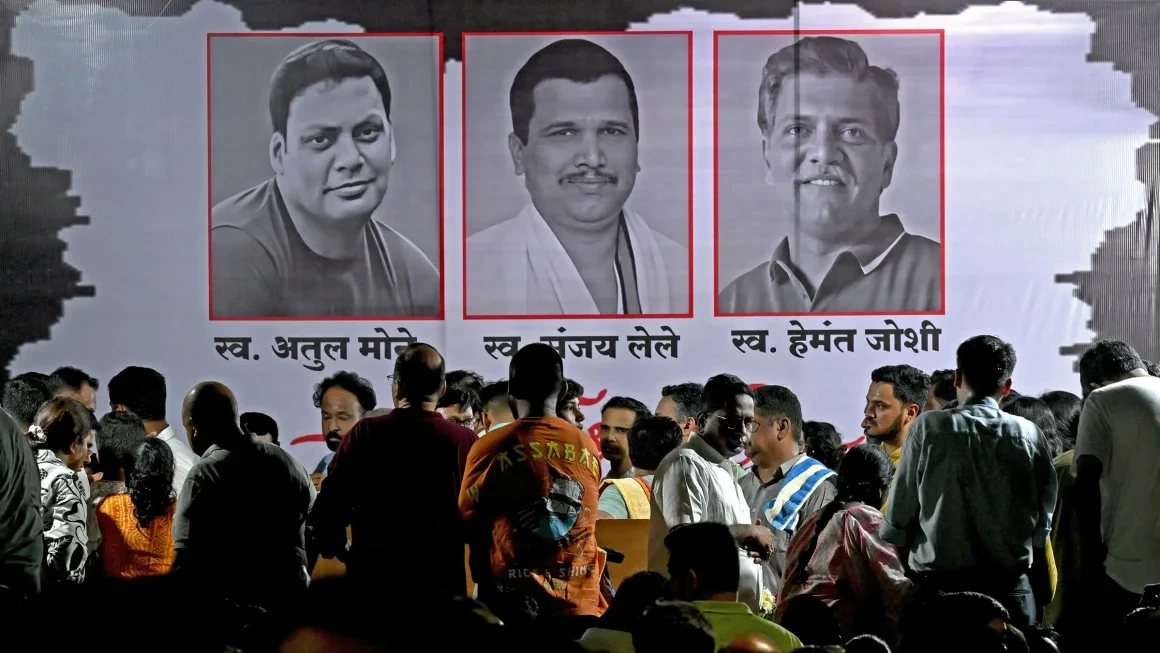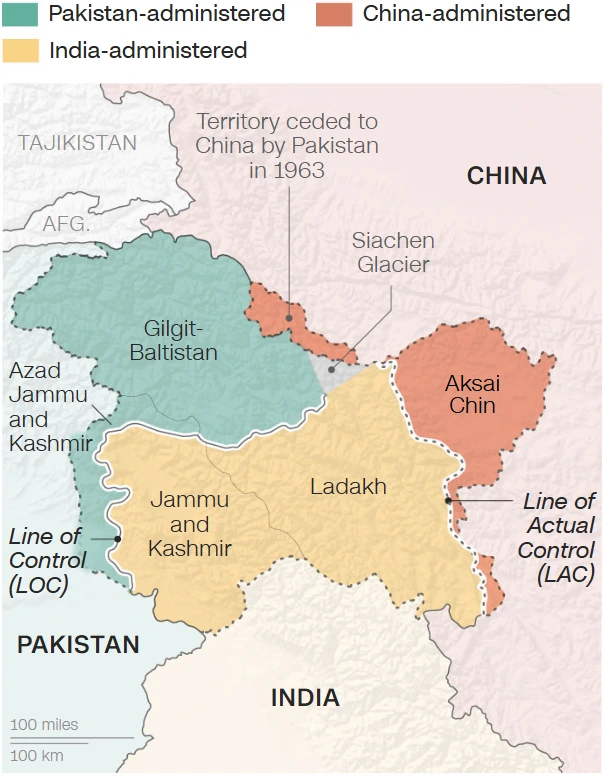India’s “Operation Sindoor” — a pre‑dawn missile and air campaign against Pakistan and Pakistan‑administered Kashmir — has sharply escalated long‑standing tensions, prompting international calls for restraint. Striking nine designated “terrorist infrastructure” sites linked to the Pahalgam massacre, New Delhi aims to dismantle militant networks, while Islamabad condemns the strikes as an “act of war” and vows retaliation. This standoff raises fears of a wider conflict between two nuclear‑armed neighbors, reviving questions about the historic Kashmir dispute and the potential for miscalculation.
The Attack on Pakistan By India
India launched its “Operation Sindoor” strikes on May 6, targeting nine sites in Pakistan and Pakistan‑administered Kashmir to degrade camps and training grounds linked to Lashkar‑e‑Taiba and Jaish‑e‑Mohammed. Witnesses in Muzaffarabad reported waking to thunderous explosions and sudden power outages during the missile barrage . Islamabad’s Inter‑Services Public Relations office confirmed three locations were hit, with eight civilians—including two children—killed and dozens injured . India stated that no Pakistani military bases were struck, emphasizing the operation’s focus on non‑military “terrorist infrastructure”.

Context of the Air Strikes
These attacks come two weeks after militants killed 26 tourists in Pahalgam, Indian‑administered Kashmir—a massacre New Delhi attributes to Pakistan‑based groups, though Islamabad denies involvement . In response, India expelled Pakistani diplomats, closed the Kartarpur Corridor, and suspended key bilateral treaties, signaling a major diplomatic breakdown.
The Pakistan India War
The latest military actions mark the most significant direct confrontation since India’s 2019 Balakot airstrikes, raising fears of a full‑scale Pakistan–India war . Both sides have activated air defenses and reinforced troops along the Line of Control, recalling memories of past conflicts in 1947, 1965, and 1971 . Global leaders, including U.N. Secretary‑General António Guterres and U.S. Secretary of State Marco Rubio, have urgently appealed for de‑escalation to prevent an uncontrollable conflagration .
Historical Flashpoints
Kashmir’s partition in 1947 left both India and Pakistan claiming the region in full, leading to three wars and countless skirmishes over the decades. The volatile status of Kashmir has made it the most heavily militarized zone on earth.
Did India Bomb Pakistan?
Contrary to initial Pakistani claims of airspace violation, India maintains that it launched missiles from its own territory and did not cross into Pakistan’s sovereign airspace . Satellite imagery released by New Delhi purports to show impacts at remote, non‑military sites—fuel depots and abandoned compounds formerly used by militants . Islamabad’s assertion of downing two Indian jets and a drone remains unverified by independent observers.
Why Did India Attack Pakistan?

India framed it as retaliation for the April 22 Pahalgam massacre in Kashmir, which claimed 26 lives. New Delhi argues that the operation was necessary to dismantle the cross‑border terror networks responsible and to “pursue perpetrators to the ends of the Earth” . By publicizing the operation and its intelligence, India seeks international support and validation for its military response .
Domestic and Diplomatic Rationale
Defence Minister Rajnath Singh described the strikes as “measured” and “focused,” aimed at denying militants safe havens without unduly escalating the conflict. New Delhi has also briefed key allies, including the U.S., to shore up diplomatic backing and mitigate fallout.
Why Are India and Pakistan Going to War?
Ongoing tit‑for‑tat measures—border skirmishes, diplomatic expulsions, and treaty suspensions—have stoked fears why are India and Pakistan going to war, as each side tests the other’s resolve . The Pahalgam atrocity reignited the core Kashmir dispute, with both capitals unwilling to back down on security and sovereignty grounds . Analysts warn that further missteps—such as civilian collateral damage—could rapidly escalate into all‑out war .
Regional and Global Stakes
A full-scale conflict between two nuclear powers would have catastrophic regional and global consequences, prompting urgent calls for mediation by the U.S., China, and the U.N.
Where Did India Strike Pakistan?
India’s nine targets included Muzaffarabad and Kotli in Azad Jammu & Kashmir; Bahawalpur and Ahmedpur East in Punjab Province; and various remote compounds near the Line of Control—specifically chosen for their links to militant training and planning . India underscores that all sites were non‑military, aiming to precision‑strike terror infrastructure while avoiding collateral damage to civilian and military installations.

Mapping the Strikes
-
Muzaffarabad & Kotli (AJK): Former Lashkar and Jaish camps
-
Bahawalpur & Ahmedpur East (Punjab): Cold storage and training compounds
-
Line of Control environs: Abandoned militant safe houses


